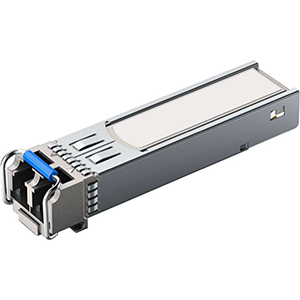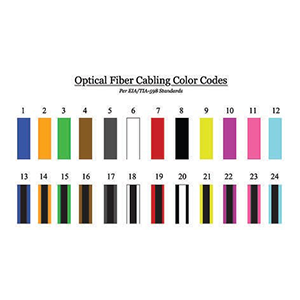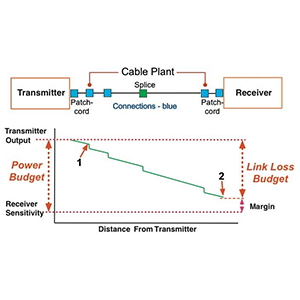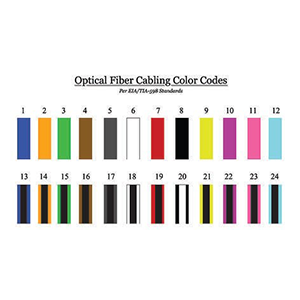Hi, welcome to the introduction to ACC (All-Dielectric Composite) optical fiber. In this article, I will introduce you to the basic concepts and working principles of ACC fiber, as well as the needs and advantages of it as a new material for optical signal transmission.
We will discuss the low loss characteristics and high bandwidth capacity of ACC optical fiber compared to traditional optical fiber, as well as its preparation process and structural characteristics. In addition, we will cover the use of ACC optical fiber in applications such as long-distance communications and data center connectivity.
I will also discuss ACC fiber compatibility points with other fiber optics and equipment as well as common interface types. Finally, we will explore the future development trends of ACC optical fiber in terms of technological innovation and application expansion. Let’s dive into the knowledge and benefits of ACC fiber optics.
Introduction to ACC optical fiber
-
Definition and rationale:
ACC fiber is an optical fiber structure based on all-dielectric composite materials. Its core and cladding are both made of dielectric materials, rather than the glass core and cladding with different refractive index that are common in traditional optical fibers. ACC optical fiber uses the difference in refractive index of dielectric materials to transmit optical signals.In ACC fiber, the optical signal is reflected inside the fiber through the change in the refractive index of the material and thus transmitted along the fiber. The design of this all-dielectric material avoids loss and dispersion of optical signals and provides low-loss and high-bandwidth transmission.
Although ACC fiber has many potential advantages, it is currently still in the research and development stage. More work needs to be carried out in material design, preparation process and performance verification to achieve its commercialization and widespread application.
-
Advantages and features of ACC fiber
-
Low loss characteristics:
ACC optical fiber has low loss characteristics compared to traditional optical fiber. This is due to the following reasons:a. No metal wires: ACC optical fiber does not contain metal wires, thus eliminating the resistance loss in traditional optical fibers caused by metal wires. This enables ACC fiber to achieve lower transmission losses.
b. No material absorption and scattering: ACC optical fiber uses all-dielectric composite materials. Compared with the glass material in traditional optical fibers, the core and cladding of ACC optical fiber are made of dielectric materials. This eliminates optical signal attenuation caused by material absorption and scattering, thereby reducing transmission losses.
c. Optimized refractive index difference: The design of ACC fiber optimizes the refractive index difference of dielectric materials so that optical signals can be efficiently reflected inside the optical fiber, reducing the attenuation and energy loss of optical signals.
The low loss characteristics enable ACC fiber to achieve longer distance transmission and more efficient optical signal transmission, providing higher transmission efficiency.
-
High bandwidth capacity:
ACC optical fiber has high bandwidth capacity and can support large-capacity data transmission and high-speed communication needs. Its features include:a. Optimized transmission performance: The design of ACC fiber can reduce dispersion effects and provide greater bandwidth capacity. It can support large-capacity data transmission applications such as high-speed data transmission, high-definition video streaming, cloud computing, and large-scale data centers.
b. Low-delay transmission: Since ACC fiber has lower dispersion effect and loss, it can achieve shorter signal propagation time, thereby reducing transmission delay. This is critical for applications that require low latency, such as financial transactions and real-time data transfer.
c. Future scalability: As a new material, ACC optical fiber has the potential to expand to higher bandwidth capacity in the future. As the demand for higher speeds and greater capacity continues to grow, ACC fiber may be able to meet future communication needs through further optimization of design and material selection.
High bandwidth capacity makes ACC fiber optic an ideal choice to meet the growing data transmission needs and high-speed communication needs.
Preparation and structure of ACC optical fiber
Preparation Process:
Preparing ACC optical fiber involves the following main steps and processes:
a. Material selection: The preparation of ACC optical fiber requires the selection of appropriate dielectric materials to form the core and cladding. These materials are usually dielectric materials with different refractive indices, such as polymers, glasses, oxides, etc. The selection of materials should consider their optical properties, mechanical strength and feasibility of the preparation process.
b. Core structure design: The core structure design of ACC fiber is one of the key steps. By adjusting the geometry of the fiber core and the difference in material refractive index, efficient transmission of optical signals within the fiber can be achieved. Common core structures include single-mode and multi-mode cores, with specific designs depending on application requirements.
c. Preparation process: ACC optical fiber can be prepared using a variety of processes, such as drawing, deposition or stacking. Among them, the drawing method is a commonly used preparation process, which forms the structure of the optical fiber by heating and stretching prefabricated materials. During the preparation process, the temperature, stretching speed and degree of stretching of the material need to be controlled to obtain the required optical properties and structural characteristics.
Optical fiber structure:
The structural characteristics of ACC optical fiber usually include the following parts:
a. Core: The core is the central part of the ACC fiber and is used for the transmission of optical signals. It is made of dielectric materials and achieves the transmission and reflection of optical signals through differences in refractive index. The geometry and refractive index distribution of the fiber core have an important impact on the transmission performance and bandwidth of the optical fiber.
b. Cladding: The cladding is the outer layer of the fiber core and is used to limit the propagation of optical signals in the fiber core. It is also constructed of dielectric material and has a low refractive index to ensure total internal reflection of the optical signal inside the core. The design of the cladding helps reduce attenuation and dispersion of optical signals.
c. Jacket: The jacket is the outer layer used to protect the optical fiber, providing mechanical protection and environmental isolation. It is usually made of polymer material, which has good flexibility and durability.
The structure of ACC fiber can be adjusted and optimized according to specific application needs to achieve the required optical performance, transmission performance and durability. Continuous improvements in preparation processes and structural designs will promote the development and application of ACC optical fibers.
Application fields of ACC optical fiber
Long distance communication:
ACC optical fiber has a wide range of applications in the field of long-distance communications, including the following aspects:
a. Optical fiber communication network: ACC optical fiber can be used to build an optical fiber communication network for long-distance data transmission and communication. Its low loss characteristics and high bandwidth capacity enable signals to be transmitted over long distances and support a variety of communication services such as high-speed data transmission, voice communication, and video transmission.
b. Fiber to the home (FTTH): ACC fiber can be used to implement fiber to the home (FTTH) deployment, extending the fiber network to users' homes or offices. The low loss and high bandwidth capacity of ACC optical fiber allows users to enjoy high-speed Internet access, high-definition video streaming and high-quality voice communication services.
Data center connection:
ACC optical fiber plays an important role in data center connections, meeting large-capacity and high-speed data transmission needs, including:
a. Data center interconnection: Data centers require high-speed, low-latency connections to support large-scale data transmission, cloud computing, virtualization and other applications. ACC fiber provides high bandwidth capacity and low loss characteristics and can be used for interconnection between data centers to support fast and reliable data transmission and communication.
b. Storage network: Storage devices in data centers require high-speed data transmission channels to meet large-scale data storage and retrieval needs. ACC fiber can provide high-bandwidth capacity and low-latency connections to support efficient operation of storage networks.
c. Server interconnection: Servers in data centers require high-speed interconnection channels to support large-scale data processing and distribution. ACC fiber can provide high-bandwidth, low-latency connections and support fast communication and data exchange between servers.
The application fields of ACC optical fiber are not limited to long-distance communications and data center connections, but can also be used in medical, military, aerospace and other fields to meet the needs of high-speed, high-bandwidth and reliable communications in different fields.
ACC fiber compatibility and interface types
Compatibility points:
The following points need to be considered in terms of compatibility of ACC fiber:
a. Connector compatibility: ACC optical fiber needs to be matched with other optical fiber connectors to ensure reliable optical fiber connection. Common fiber optic connector types include LC, SC, ST, FC, etc. When selecting a connector, make sure it matches the interface shape and size of the ACC fiber.
b. Optical fiber interface matching: Parameters such as core diameter and cladding refractive index of ACC fiber need to match the interfaces of other optical fiber equipment to ensure the transmission and matching performance of optical signals. When connecting optical fibers, the matching of relevant parameters is crucial for effective coupling and transmission of optical signals.
Interface Type:
Common interface types of ACC fiber include:
a. LC (Lucent Connector): The LC interface is a miniaturized fiber optic connector that is widely used in high-density fiber optic connections and data transmission applications. It has low insertion loss and high coupling performance, and is suitable for connecting ACC optical fibers.
b. SC (Subscriber Connector): The SC interface is a common fiber optic connector used for single-mode and multi-mode fiber optic connections. It has a simple plug-in design and reliable performance characteristics, and is suitable for the connection needs of ACC optical fiber.
c. MPO (Multi-fiber Push-On): The MPO interface is a multi-fiber optical fiber connector used for high-density optical fiber connection and data transmission. It can realize parallel transmission of multiple fiber cores and is suitable for application scenarios that require high bandwidth capacity and high-speed data transmission.
These interface types are only common examples of ACC fiber, and other interface types may exist in actual applications. When selecting and using interfaces, appropriate selections need to be made based on specific application needs and equipment requirements to ensure compatibility and performance of fiber optic connections.
Future development trend of ACC optical fiber
Technological innovation plays a key role in promoting the development of ACC optical fiber. The following are some development trends of ACC optical fiber in technological innovation:
a. Reduce loss: The loss of ACC optical fiber is an important performance indicator, and the future development trend is to further reduce the loss of optical fiber. By improving material selection, optimizing fiber core and cladding structures, and innovating manufacturing processes, lower optical fiber losses can be achieved and the transmission efficiency of optical signals can be improved.
b. Increase bandwidth capacity: With the continuous growth of data demand, increasing the bandwidth capacity of optical fiber is an important development direction. By optimizing the fiber core structure and introducing new materials and design technologies, the bandwidth capacity of ACC fiber can be increased to meet the needs of high-speed data transmission and high-bandwidth applications.
c. Multi-mode optical fiber improvement: The multi-mode optical fiber in ACC optical fiber plays an important role in short-distance high-speed data transmission. The future development trend is to improve the dispersion characteristics and bandwidth performance of multimode optical fiber to achieve higher transmission rates and longer transmission distances.
d. Application of new materials: With the continuous development of new materials, future ACC optical fibers may use more advanced materials, such as photonic crystals, two-dimensional materials and nanostructured materials, to achieve better optical performance and transmission characteristics. .
e. Optical fiber sensing applications: The application of ACC optical fiber in the field of optical fiber sensing also has potential and room for development. The future development trend is to combine the advantages of ACC optical fiber, such as low loss and high sensitivity, to develop more optical fiber sensing applications, such as temperature sensing, pressure sensing and chemical sensing.
Summarize:
Thank you for reading this introduction to ACC fiber optics. As a new type of material, ACC optical fiber has unique advantages in the field of optical signal transmission. It has low loss characteristics and can provide higher transmission efficiency than traditional optical fibers. At the same time, ACC optical fiber also has high bandwidth capacity and can meet the needs of large-capacity data transmission and high-speed communication.
In the future, ACC optical fiber is expected to continue to develop in terms of technological innovation and application expansion, achieving lower loss and higher bandwidth capacity. It may play an important role in areas such as smart Internet of Things and high-speed data centers. If you have any further questions about ACC fiber or want to know more information, please continue to pay attention to GracyFiber Company, we will be happy to help you. Thanks!
- What does ACC business do?
- What is fiber optic account?
- What is ACC Communications?
- Is ACC owned by AT&T?
- What is ACC short for?
- What does AAC stand for?
- Who benefits from AAC?





